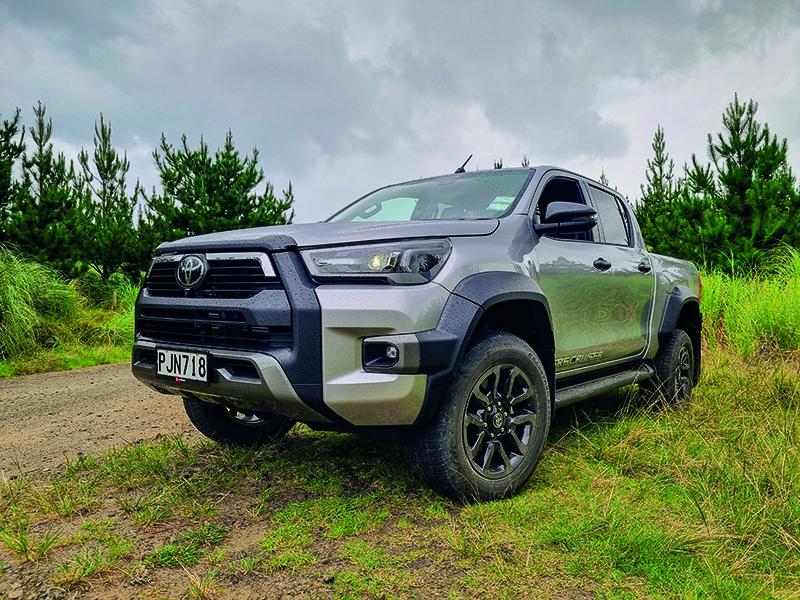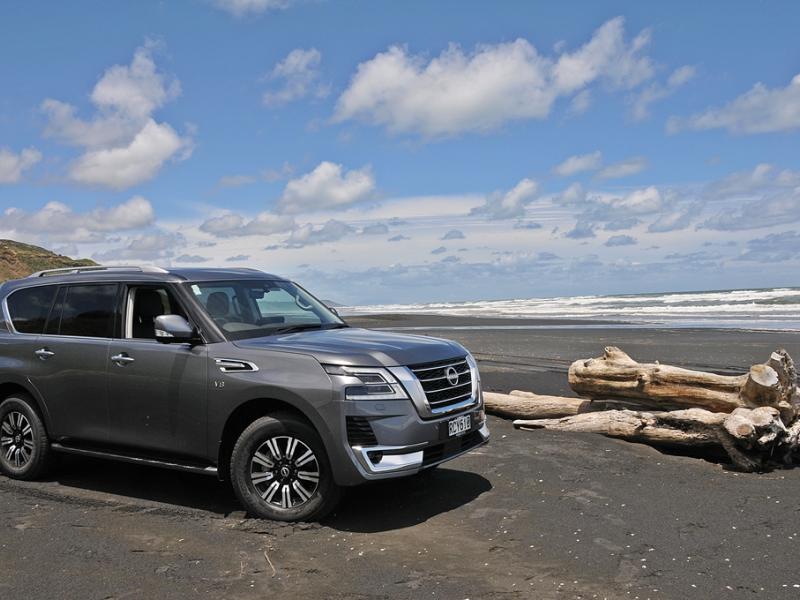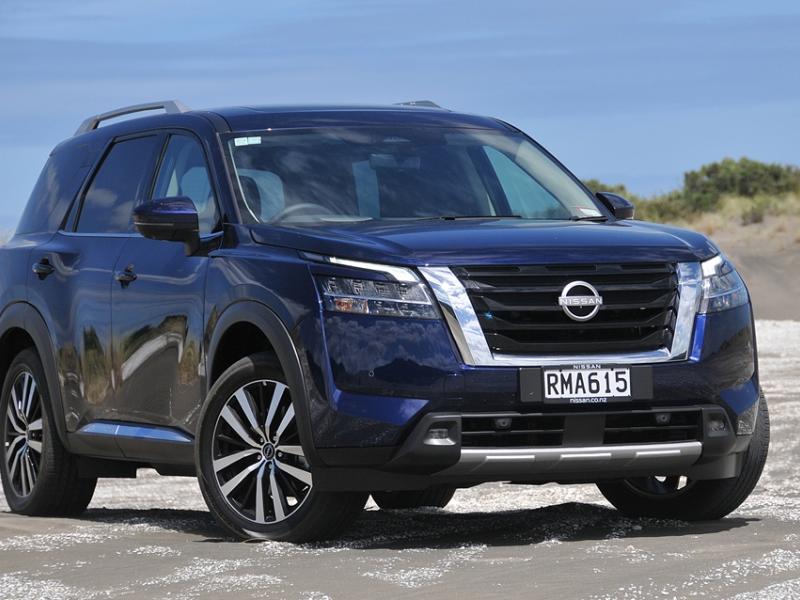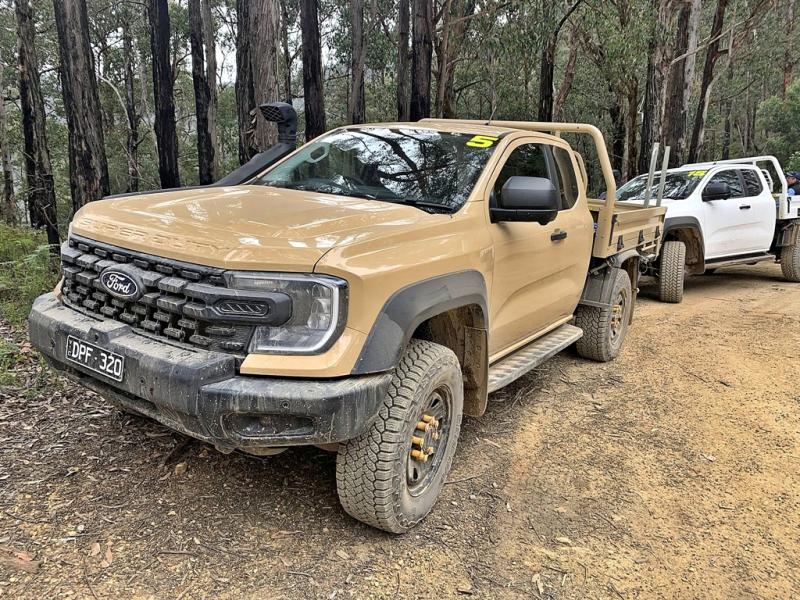Sean Willmot has questions – and finds answers – during his drive of Toyota’s wide track Hilux.
Question: When is an SR5 Cruiser Hilux not an SR5 Cruiser Hilux?
Answer: When it is a wide track SR5 Cruiser.
This may seem a strange start to an article on Toyota’s commercial flagship, but then when the idea of the wide track variant was first announced, other questions came to mind, the first of which was; “why?”
The SR5 Cruiser is the coolest of all the Hilux’s, so did it need to be anything more than it already…was?
Toyota seems to think so, which gives rise to another starter for 10: is the wide track SR5 Cruiser the solution to a question only Toyota asked?
Well, that one’s a little outside of our purview as commentators with less than direct communications between ourselves and Toyota Japan.
We did manage to solicit some commentary from an SR5 owner who – when asked if his company (he was the managing director) would find a wide track either desirable or useful – replied with a similar question to our first: “why?”
Actually, he elaborated that his regular SR5 more than did what was expected of it and as for having anything slightly larger, he suggested that the ‘working Hiluxes’ might have been a better bet than his Cruiser, but perhaps Toyota Japan knows something he – and we – don’t.
So, let’s head out of the realm of speculation for now, and take a solid long look at the flagship Toyota Hilux 4WD wide track SR5 Cruiser (whew! I suspect new owners will want to stop writing that out on a regular basis!).
Quite obviously, the new SR5 has seen a substantial increase in wider wheel track. How much?
About 140mm front and rear – a not inconsiderable increase – has been added laterally, while the vehicle’s ride height has increased by 20mm or so. These two increases combined have resulted in improved performance, safety, and capability in on and off-road situations.
This was not done by just adding a couple of inches of steel to the tie rod ends.
A close examination of the front end – still an independent front suspension coil setup – sees an extended front suspension arm and front stabiliser bar length. As well, the shock absorber angle has been adjusted to improve its efficiency.
Moving to the leaf suspension back end, the rear axle is wider, which has allowed the dampers to be moved out further towards the wheels, thus increasing their effectiveness when it comes to vertical movement.
At the rear, axle length has been extended, which has allowed the dampers to be moved further out towards the wheels.
For the first time on Hilux, a rear stabiliser bar has been installed which has obvious benefits of reducing roll, increasing ride comfort and with all factors considered, improved steering feel when cornering.
Basically, the SR5 Cruiser, as well as having the Hilux’ celebrated 4WD credentials is now more tuned to on-road onditions than it has been before.
To further add to this – and given Toyota’s design engineers were adjusting the underpinnings with an eye to having a pronounced effect on handling and driving confidence anyway – it seemed appropriate to upgrade the braking capabilities of the SR5 Cruiser.
Thus, we now see sports-oriented rear ventilated disc brakes replacing the previous drum brakes at the back, while the front discs have been enlarged to 17-inches.
All of which is very nice technically, but Toyota isn’t in the habit of doing things by halves, so there has been a little cosmetic enhancement too, with the inclusion of chunky over fenders and a little widening of the front body to give a more integrated look to the front bumper unit with its integrated fog lights.
One last mention of upgrades before we get to the nitty gritty drive experience.
The Hilux’ extraordinary suite of safety features has seen two significant additions; namely blind spot monitoring and rear cross traffic assist.
This makes the wide track SR5 Cruiser one seriously well-equipped, well thought out ute which yes, does acquit itself really well on-road.
With our main highways becoming more and more like country bumpkin roads (not helped by flooding, I’ll admit, but let’s not pull punches here, our state highways are positively third world compared to what they once were) improving the on-road ability of utes is definitely a smart step on the part of a ute builder.
Let’s be real for a second and ignore all the ‘this truck can go anywhere hype’ we are so used to seeing from ute manufacturers in general.
Utes like the wide track SR5 Cruiser make a statement which mostly says ‘I’m at the top of my game’ rather than being a hardcore working rig – though in fairness, the Toyota can do the mahi if required – and as such, being set up to deliver a more sophisticated on-road ride is more important than being able to leap like a mountain goat from cliff to cliff.
And the more I think about it, the more Toyota’s wide tracking of the SR5 Cruiser makes sense.
In off-road situations, well, it IS a Hilux after all, and we all know, thanks to the Bugger and Crumpy/Scotty ads of old that off road, the Hilux is more than capable.
When faced with lightweight gravel road conditions the wide track seems to be more controllable and stable, even when encountering heavily wash-boarded trails with an unladen tray.
Being an SR5, the wide track Cruiser’s carrying ability is a tad compromised – 35kg less payload than the regular SR5 – but your overall width is better by 165mm and height is up 15mm overall so there’s more trade-off than compromise – at least where the theoretical numbers are concerned.
And now the good stuff, what is the wide track SR5 Cruiser like on the inside?
It’s fair to say Toyota has come up with one of the more cohesive cabins in the modern ute space. Hilux does buck the trend somewhat and has retained an older style interior but it is comprehensive, clean and cultured. Ergonomics are excellent and the quality of the equipment onboard, cameras, switchgear, digital display, trim and JBL audio suite are beyond reproach.
I did find the slightly proud speakers at the base of the A-pillars a little distracting, especially with their chrome surrounds, but other than that, I found the cabin hard to fault.
To be honest I was expecting a little less of the seats as they look a little on the hard wearing but plain side, however, the bolster is excellent as is the day-to-day practicality, while the seat heaters reinforce the SR5 Cruiser’s luxury cachet.
Is the wide track SR5 Cruiser perfect then? Well, no, everyone’s going to have their own take on a $60k + ute and it’s reasonably easy to pick holes in any vehicle of this nature.
Looking at it with a broad-stroke brush however, marrying the wide track’s road and ride refinement thanks to the suspension changes and the SR5 Cruiser’s top end equipment and specification level suggests that Toyota is maintaining its commitment to continuous improvement for its customers.
Will that shore up the market share? For the True-to-Toyota customers, absolutely. For newcomers to the fold?
Well, the wide track SR5 Cruiser has more subtlety than its competition but it does have comparable credibility, so before you push the button on buying that top end ute, do the right thing and do your homework – you may be surprised at what you find.







